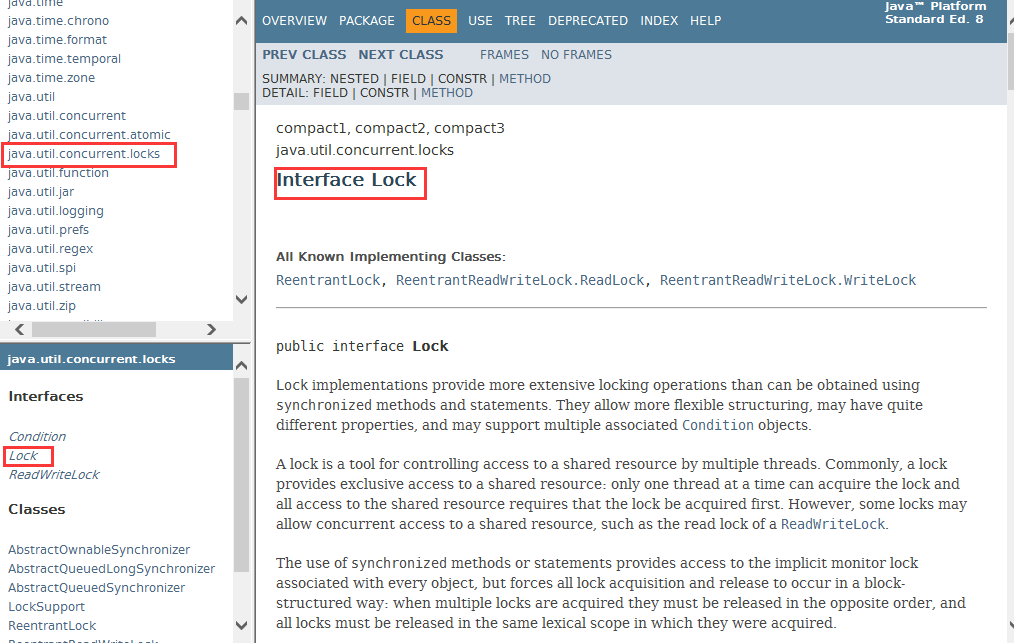标签:今天 pack 对象 匿名内部类 rtu notify xtend override 条件
1、线程状态
Thread.State public enum State { /** * Thread state for a thread which has not yet started. */ NEW,(新建) /** * Thread state for a runnable thread. A thread in the runnable * state is executing in the Java virtual machine but it may * be waiting for other resources from the operating system * such as processor. */ RUNNABLE,(准备就绪) /** * Thread state for a thread blocked waiting for a monitor lock. * A thread in the blocked state is waiting for a monitor lock * to enter a synchronized block/method or * reenter a synchronized block/method after calling * {@link Object#wait() Object.wait}. */ BLOCKED,(阻塞) /** * Thread state for a waiting thread. * A thread is in the waiting state due to calling one of the * following methods: * <ul> * <li>{@link Object#wait() Object.wait} with no timeout</li> * <li>{@link #join() Thread.join} with no timeout</li> * <li>{@link LockSupport#park() LockSupport.park}</li> * </ul> * * <p>A thread in the waiting state is waiting for another thread to * perform a particular action. * * For example, a thread that has called <tt>Object.wait()</tt> * on an object is waiting for another thread to call * <tt>Object.notify()</tt> or <tt>Object.notifyAll()</tt> on * that object. A thread that has called <tt>Thread.join()</tt> * is waiting for a specified thread to terminate. */ WAITING,(不见不散) /** * Thread state for a waiting thread with a specified waiting time. * A thread is in the timed waiting state due to calling one of * the following methods with a specified positive waiting time: * <ul> * <li>{@link #sleep Thread.sleep}</li> * <li>{@link Object#wait(long) Object.wait} with timeout</li> * <li>{@link #join(long) Thread.join} with timeout</li> * <li>{@link LockSupport#parkNanos LockSupport.parkNanos}</li> * <li>{@link LockSupport#parkUntil LockSupport.parkUntil}</li> * </ul> */ TIMED_WAITING,(过时不候) /** * Thread state for a terminated thread. * The thread has completed execution. */ TERMINATED;(终结) }
2、wait/sleep的区别
wait/sleep
功能都是当前线程暂停,有什么区别?
wait放开手去睡,放开手里的锁
sleep握紧手去睡,醒了手里还有锁
3、什么是并发?什么是并行?
并发:同一时刻多个线程在访问同一个资源,多个线程对一个点
例子:小米9今天上午10点,限量抢购
春运抢票
电商秒杀...
并行:多项工作一起执行,之后再汇总
例子:泡方便面,电水壶烧水,一边撕调料倒入桶中
4、什么是锁

锁实现提供了比使用同步方法和语句可以获得的更广泛的锁操作。它们允许更灵活的结构,可能具有非常不同的属性,并且可能支持多个关联的条件对象。
1 class X { 2 private final ReentrantLock lock = new ReentrantLock(); 3 // ... 4 5 public void m() { 6 lock.lock(); // block until condition holds 7 try { 8 // ... method body 9 } finally { 10 lock.unlock() 11 } 12 } 13 } 14 15 16 synchronized与Lock的区别 17 18 两者区别: 19 1.首先synchronized是java内置关键字,在jvm层面,Lock是个java类; 20 2.synchronized无法判断是否获取锁的状态,Lock可以判断是否获取到锁; 21 3.synchronized会自动释放锁(a 线程执行完同步代码会释放锁 ;b 线程执行过程中发生异常会释放锁),Lock需在finally中手工释放锁(unlock()方法释放锁),否则容易造成线程死锁; 22 4.用synchronized关键字的两个线程1和线程2,如果当前线程1获得锁,线程2线程等待。如果线程1阻塞,线程2则会一直等待下去,而Lock锁就不一定会等待下去,如果尝试获取不到锁,线程可以不用一直等待就结束了; 23 5.synchronized的锁可重入、不可中断、非公平,而Lock锁可重入、可判断、可公平(两者皆可) 24 6.Lock锁适合大量同步的代码的同步问题,synchronized锁适合代码少量的同步问题。
5、创建线程的方式
1)继承Thread类
1 package com.study.thread; 2 3 public class ThreadTest { 4 public static void main(String[] args) { 5 for(int i=0;i<10;i++){ 6 //继承Thread类,覆写run()方法,创建多线程 7 ThreadDemo t = new ThreadDemo(); 8 t.start(); 9 } 10 11 } 12 } 13 class ThreadDemo extends Thread{ 14 @Override 15 public void run(){ 16 System.out.println("hello world"); 17 } 18 }
2)实现Runnable接口
1 package com.study.thread; 2 3 public class ThreadTest { 4 public static void main(String[] args) { 5 for (int i = 0; i < 10; i++) { 6 //继承Thread类,覆写run()方法,创建多线程 7 // ThreadDemo t = new ThreadDemo(); 8 // t.start(); 9 Thread t = new Thread(new RunnableDemo()); 10 t.start(); 11 } 12 13 } 14 } 15 16 class ThreadDemo extends Thread { 17 @Override 18 public void run() { 19 System.out.println("hello world"); 20 } 21 } 22 23 class RunnableDemo implements Runnable { 24 25 @Override 26 public void run() { 27 System.out.println("hello Runnable"); 28 } 29 }
3)用匿名内部类方式
1 public class ThreadTest { 2 public static void main(String[] args) { 3 for (int i = 0; i < 10; i++) { 4 //继承Thread类,覆写run()方法,创建多线程 5 // ThreadDemo t = new ThreadDemo(); 6 // t.start(); 7 // Thread t = new Thread(new RunnableDemo()); 8 // t.start(); 9 new Thread(new Runnable() { 10 @Override 11 public void run() { 12 System.out.println("hello 匿名内部类"); 13 } 14 }).start(); 15 } 16 17 } 18 }
总结:上诉3种方式中,1和2都要new对象出来(浪费内存),3是直接new接口,推荐使用第3种方式。
标签:今天 pack 对象 匿名内部类 rtu notify xtend override 条件
原文地址:https://www.cnblogs.com/zsy-code/p/13662426.html